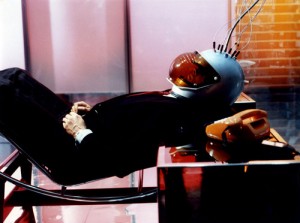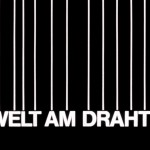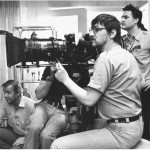World on a Wire
 Back in the day, say the mid-80s, you could expect about a dozen titles of Rainer Werner Fassbinder to play annually with some regularity at a Houston theater whether it was the MFAH, or the Rice Media Center or the River Oaks (then a repertory theater showing two different films per night) or even a small screen at the University of Houston where German studies professor Sandy Frieden taught a course on Fassbinder’s films. Fassbinder died in 1982 at the age of 37 with at least that many feature (or German television) movies to his credit, so a dozen titles is merely one-third of his output.
Back in the day, say the mid-80s, you could expect about a dozen titles of Rainer Werner Fassbinder to play annually with some regularity at a Houston theater whether it was the MFAH, or the Rice Media Center or the River Oaks (then a repertory theater showing two different films per night) or even a small screen at the University of Houston where German studies professor Sandy Frieden taught a course on Fassbinder’s films. Fassbinder died in 1982 at the age of 37 with at least that many feature (or German television) movies to his credit, so a dozen titles is merely one-third of his output.
World on a Wire (Welt am Draht, from 1973) was not a title that popped up with any frequency, like say The Marriage of Maria Braun, The American Soldier, Despair, Fox and His Friends or In A Year of 13 Moons. So adding that onto the list of Fassbinder films I hadn’t seen seemed like a non-issue. Only having now seen World on a Wire it’s obvious that this plunge into cerebral science fiction rates at the top of Fassbinder’s prolific output.
If you’re familiar with Fassbinder films you’ll recognize a fair amount of actors that populate his other movies. If you’re unfamiliar with Fassbinder at all you will, no doubt, have heard of The Matrix, or similarly the abstract notion of sci-fi that is the world of Philip K. Dick. World on a Wire is about a computer, the Simulacron, that controls the reality of the characters. What WOAW lacks in massive effects it makes up with controlled camera movement, striking color design and a thought process that allows the audience to believe the character’s they’re watching are shifting between states of reality.
Obviously I’m using the word reality a lot but it’s this subtle nuance of one moment looking at a sketchbook and the next moment looking at the same sketchbook but all the drawings have disappeared that permeates World on a Wire. Nothing unfolds with the continuity one expects in daily living, certainly that’s how each day progresses for Fred Stiller (Klaus Lowitsch) a scientist who takes over the Simulacron project when the previous leader dies. Another diversion Stiller uses involves putting on a kind of virtual reality helmet and going into an alternative reality where he discusses plot points with Einstein. A phone booth is used as a gateway device for this transaction, which is one reason I brought up The Matrix.
Fassbinder made WOAW in 16mm as is common for television and one of the cinematographers was Michael Ballhaus now known as well for his many collaborations on Scorsese films. Fassbinder uses a calibrated speed zoom into Stiller’s face with regularity throughout WOAW, sometimes to comic effect, other times to heighten tension. There’s also a type of blocking that Fassbinder uses with his talent that’s been ripped off in every perfume commercial ever made.
World on a Wire, playing at the MFAH this weekend (October 7-9) deserves attention from foreign film buffs and sci-fi mavens alike.
- Michael Bergeron
















